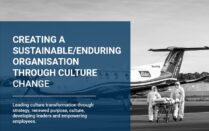
High Performance Cultures: A ‘One Culture Framework Fits All’ Approach
Organisational Culture is a key piece to any organisation creating the environment that provides optimal levels of employee engagement and to enable the organisation to be high performing in their given sector. Human Synergistics (HS) are world leaders in organisational culture and have proven tools to measure culture and inform cultural transformation.
BRS are advocates of the HS tools, and we use them regularly to inform, design and drive leadership and culture development engagements with clients. HS have recently published a series of whitepapers educating readers around the application and impact of culture in organisations. Over the coming months, I will use the Whitepapers as a basis for a sequence of articles that look to assist our regular blog followers in applying these Whitepapers. I will break down the key concepts of organisational culture and climate, how culture plays out within organisations and the impact it has on achieving overarching strategic outcomes.
What is Culture Cutting Through the Noise Whitepaper
For the purposes of this discussion, I will use the following extract from the Whitepaper as the definition of organisational culture:
“The shared values, norms and expectations that govern the way people approach their work and interact with each other.” Aspects of organisational culture listed are Values, Norms, Expectations, Governs, Approach their work, and Interact with each other.”
Shaun McCarthy (Chair of Human Synergistics Australia and New Zealand) provides expert insights around the notion of building a culture for excellence which is achieved by aligning mission and vision with achieving overarching strategy. This notion of a culture for excellence, incorporates all aspects of organisational culture such as risk and safety, great customer service, strategy execution, long term growth, employee engagement and innovation. A culture for excellence also drives industry specific outcomes which differs from the often-held view around developing specific cultures, such as ‘a culture of innovation’. Further to this, whilst leaders may gain comfort from looking at industry specific culture data (e.g. average Ideal Cultures within sectors and industries), culture is unique to each individual organisation.
The Human Synergistics approach at an organisational level (Organisational Culture Inventory and Organisational Effectiveness Inventory) provides a way for organisations to see, measure and change the four interrelated components of organisational culture and climate:
- Ideal Culture: This represents the ideal culture an organisation aspires to have, generally informed by core value statements such as Mission, Vision and Values.
- Causal Factors: These cause the culture to be what it is and are measure in the following components:
- Articulation of Mission, Structures, Systems, Job Design, Communication and Leadership
- Current Culture: The current reality, reflecting how people believe they should behave to fit in and get ahead.
- Outcomes: Outcomes of the current culture at the individual, group, and organisational levels. Individual outcomes include employee engagement, motivation, role clarity and stress.
These interrelated culture components provide the specific and measurable data required for organisations to make informed decisions around desired culture development. The Causal Factors become Levers for Change, where organisations identify specific causal factors to focus on in order to develop the Current Culture to be aligned with the Ideal Culture and in turn, improve key Outcomes.
This model highlights an important distinction, organisational culture is commonly understood to be linked to be reflected behaviours. A key understanding is that whilst culture is behaviours, culture transformation does not come from focusing on behaviours, rather, it is achieved through a strategic focus on key Causal Factors, as measured with the HS tools. This approach to cultural transformation is both empowering and practical for the organisation as it provides tangible data to inform action to bring about long-term change and focuses on the cause and not the symptoms in ensuring we address the root cause issues.



